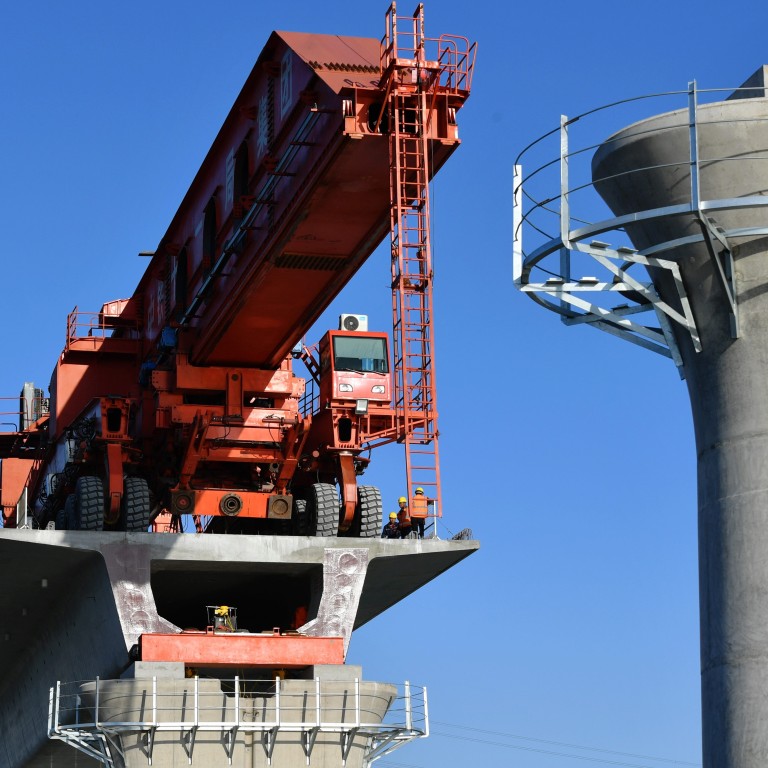
China’s economic growth looks to continue into 2021, but infrastructure boom nearing its peak, analysts say
- Overall growth of fixed-asset investment accelerated to 2.6 per cent in the first 11 months of the year, up from 1.8 per cent in the January-October period.
- Compared with October, the growth rates of property and infrastructure investment lost steam in November
A series of massive infrastructure construction projects have begun across China in the final months of the year, as the country’s building boom continues to boost economic growth in the fourth quarter and looks to continue doing so into 2021.
However, the momentum of the country’s infrastructure and property building boom appears to be approaching its peak after Beijing turned to this traditional growth driver to help power the economy’s recovery from the damage caused by the coronavirus pandemic, according to analysts.
Chinese government data released on Tuesday shows that infrastructure investment rose 1 per cent from a year earlier in the January-November period, accelerating by 0.3 percentage points from the growth rate in first 10 months of the year, while the growth of property development investment accelerated to 6.8 per cent from 6.3 per cent.
That helped the overall growth of fixed-asset investment accelerate to 2.6 per cent in the first 11 months of the year, up from 1.8 per cent in the January-October period.
The strong bounceback in investment was unsurprising, given a surge in the growth of construction equipment sales last month.
Sales of excavators soared to 32,236 units in November, up 66.9 per cent from a year earlier, according to figures from the China Construction Machinery Association. In addition, sales of heavy trucks increased 33.5 per cent in November from a year earlier, according to data from the China Association of Automobile Manufacturers.
The data dovetails with the announcements by a number of Chinese provinces and cities – from landlocked Guizhou province in the southwest to Hebei province in the north – heralding the start of major construction projects valued at trillions of yuan since late November.
There was also good news from the property sector. The funds received by real estate development companies rose to 17.11 trillion yuan (US$2.62 trillion) in the January-November period, up 6.6 per cent from a year ago and above the 5.5 per cent gain in the first 10 months of the year, according to data from the National Bureau of Statistics (NBS).
The growth in building investment is expected to extend into 2021, but there are already signs that its momentum is starting to slow.
Compared with October, the growth rates of property and infrastructure investment in November lost steam, dropping to 11.5 per cent and 3.5 per cent, respectively, from 12.2 per cent and 4.4 per cent, according to calculations by Zheshang Securities based on the NBS data.
Chen Jiangyang, an economist for Greater China at HSBC, said the pace of building investment is likely to slow further next year due to a less expansionary fiscal policy and tighter financing rules.
In August, Chinese regulators outlined a plan – dubbed “the three red lines” –to set limits for the ratios of debt to cash, debt to assets, and debt to equity for the country’s 12 major property developers, effectively limiting their ability to fund new projects.
He Wei, a China economist at research firm Gavekal, also said that the infrastructure investment has already peaked and that property investment was in the progress of peaking as a result of new regulatory policies.
Haitong Securities analyst Liang Zhonghua added in a note on Tuesday: “The growth momentum of the Chinese economy will tend to decline after a short-term surge.”

